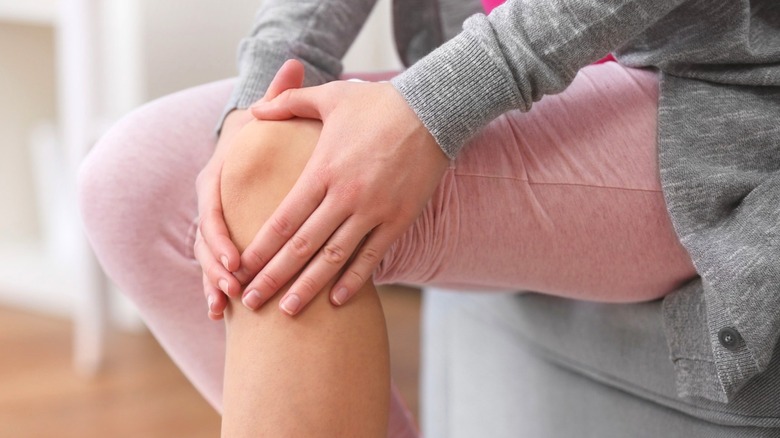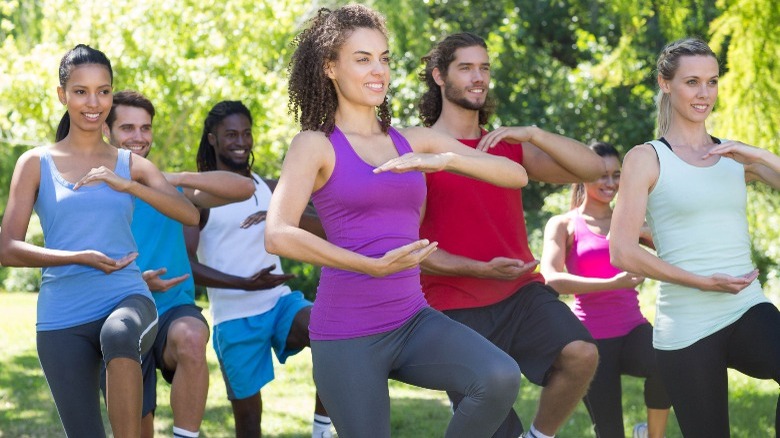Exercises That Can Help Ease Arthritis Pain
If you suffer from arthritis, you're not alone. According to the advocacy organization Global RA Network, arthritis impacts the lives of more than 350 million people worldwide. The Centers for Disease Control and Prevention (CDC) reports that between 2013 and 2015 roughly one in four Americans, or about 58.5 million people, was diagnosed by their doctor with some form of arthritis. This is projected to increase to over 78 million people by the year 2040.
But what exactly is arthritis? According to the experts at the Mayo Clinic, arthritis is a disease that causes pain and swelling in your joints with symptoms that also include stiffness, redness, and limited range of motion, among others. There are many types of arthritis, with osteoarthritis and rheumatoid arthritis being the most common. Osteoarthritis is a condition that occurs when the tissues and cartilage that protect your bones wear down over time, leading to pain as bones begin to grind against other bones. Rheumatoid arthritis, or RA, is an autoimmune disease where the body's immune system attacks the lining of the joints, causing joints to swell and become inflamed.
Depending on whether you have these or other types of arthritis, your treatment will vary. However, in many cases, there are steps that you can take to reduce your pain.
How these exercises can help
If you are suffering from rheumatoid arthritis, the experts at Medical News Today propose some exercises you may want to try to mitigate pain. For example, while stretching is a good habit for anyone, it can be an especially useful tool for people suffering from rheumatoid arthritis. Types of stretches will vary, depending on the location of the pain, but they will all typically involve gently holding a stretch for about 20 to 30 seconds. If you need to incorporate some movement in your day, taking low-impact walks can also improve joint health.
According to Medical News Today, studies have shown that engaging in tai chi or yoga can improve the quality of life for people who have RA by improving balance, flexibility, range of motion, and reducing depression. If you love the water and have RA, swimming or gentle exercises in the pool could also be a good option, though more research is needed to confirm the benefits.
These and other gentle activities you may already enjoy, such as gardening and riding your bike, can potentially provide you with some relief over time. However, the key is to engage in these stretches and activities consistently to experience the benefits. If you are unsure about the right exercises for your situation, consult with a physical therapist to develop a program that aligns best with your issues and goals (via Medical News Today).


